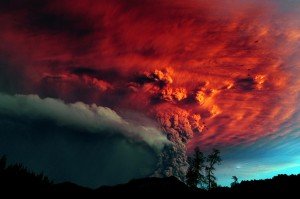 Volcanic ash originating from the ongoing eruption of a Chilean volcano is causing disruptions to air traffic across New Zealand. The Civil Aviation Authority has said that local airspace may continue to be affected for up to a week.
Volcanic ash originating from the ongoing eruption of a Chilean volcano is causing disruptions to air traffic across New Zealand. The Civil Aviation Authority has said that local airspace may continue to be affected for up to a week.
Access Metservice’s latest volcanic ash advisory here.
Last year, during the eruption of Eyjafjallajökull, our colleagues at the UK Science Media Centre approached experts to find out what effect ash particles have on aircraft and jet engines. Their responses are summarised below:
Dr Rob Howell, Department of Mechanical Engineering at the University of Sheffield comments:
“There are a number of potential issues regarding engine contamination with volcanic ash. One occurs where ash builds up on some of the internal parts of the jet engine, specifically the compressor and changes the aerodynamics of that compressor. It is possible, with enough contamination, for the engine to enter a condition called stall and eventually surge where the engine loses power and can also be damaged.
“Another problem, more often seen in industrial jet engines is where the turbine cooling holes become blocked. This will cause the turbine blades to increase in temperature and fail, potentially destroying the engine. A further problem area is the combustion systems of the engines which can become clogged and again the engine looses power.”
Dr David Rothery from the Department of Earth & Environmental Sciences at The Open University, comments:
“Ash melts inside the hot engine. This molten glass clogs nozzles and adheres to turbine blades. Pilots’ manuals (revised after 1982 engine losses over Galungung, Indonesia and 1989 over Redoubt, Alaska) advise to throttle back and lose altitude in the event on unanticipated engine power loss. This allows the plan to drop below the cloud, and the cold air drawn into the engines usually shatters the glass and allows the engines to restart. (Previously, pilots would increase engine speed, which made the problem worse). Of course, it is better to avoid flying into an ash cloud in the first place.”
Dr John Murray, Senior Research Fellow, Department of Earth Sciences, The Open University comments:
“The effect on plane engines can be drastic: a thick ash eruption once caused all four jet engines in an airliner to stop together, and on another occasion in Alaska, the windscreens were so abraded by ash and lapilli that they were like ground glass and nothing was visible. The pilots eventually had to land by opening the side windows and looking out.”
Haydn Thompson, at the IET Aerospace Network, comments:
“I have actually flown through a volcanic ash cloud over Mexico city when the volcano there unexpectedly erupted. It is very hard and abrasive. It also conducts electricity when it is wet so there is a possibility of shorting out electrics.
“The main hazard though is that an engine may stall and shutdown. There is a very well documented case of an aircraft having its engines shut down after flying through a cloud of ash. Regulations were brought in so that aircraft now have to fly at a lower altitude if ash is present to allow for engine relight – which is what happened to me in Mexico.
“It is not advisable to fly through ash due to the excessive abrasion of materials within the engine.”
Contact the Science Media Centre (NZ) for details of local experts. We will update this site as more info becomes available.